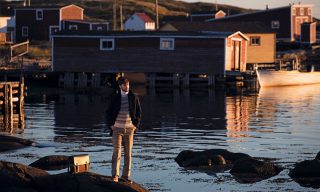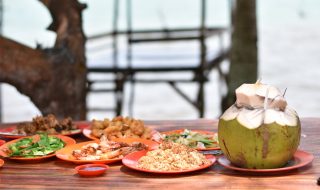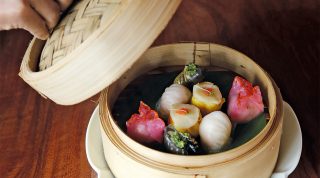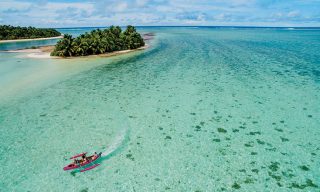On Prince Edward Island, a meditatively beautiful and richly traditional Canadian province off the country’s eastern shores, little seems to change—unless it’s for the better.
On nights when I can’t fall asleep, I imagine myself in the most peaceful place in the world. It’s a small, thin stretch of beach, no more than 300 meters long, that sticks out into Rustico Bay like a stray wisp of hair. I lie alone on the golden sand watching midnight-blue waves lap against the shore. The tiny harbor town of North Rustico sits across the water, its Crayola-colored fishing shacks arranged in a tidy line, an old wooden lighthouse standing guard nearby. Behind me is a short ridge of marram-grassed sand dunes and my bike lying on its side by a red-dirt road. The sun is warm. The only sounds are the roll and wash of the waves and the soft whoosh of the wind.
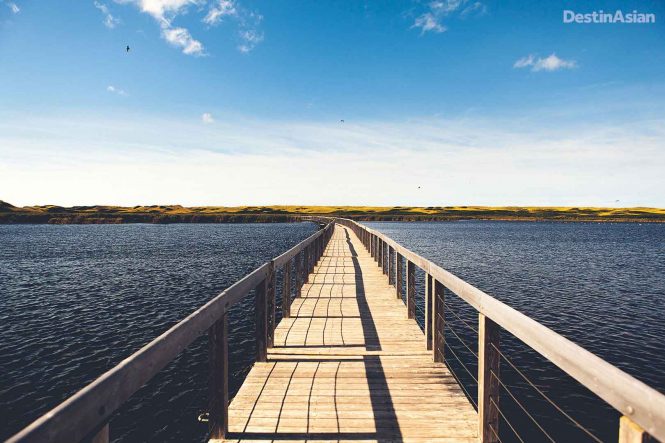
A floating boardwalk in the Greenwich segment of Prince Edward Island National Park. All photos by Josh Lipton.
The beach I’m picturing hasn’t changed since my dad first visited Prince Edward Island as a college student in the summer of 1974, driving up the coast from New York and landing in Canada’s smallest province via ferry. He was so enchanted that when he met my mom many years later, he brought her to its shores as well, and she too fell in love with the place. Just about everyone does. With its quaint fishing villages and picturesque bays, flowering meadows and star-filled night skies, and endless green quilt of fields dotted with clapboard farmhouses and barns, P.E.I. has an ineffable ability to settle the soul.
From that first visit together, every summer of my parents’ lives, and then my life, was spoken for. First we rented a cottage with an old crab apple tree and a field of tall, golden grass that stretched down to the western shore of Rustico Bay. Then, when I was eight, we built a summerhouse of our own atop the red cliffs of Grand Père Point on the bay’s southern edge, looking out to the Gulf of St. Lawrence beyond. My summers were spent building tree houses with other kids on the Point, riding bikes to the beach, and lying in fields during nights of flashlight tag, staring up at the crystalline cosmos as quietly as kids can manage so as not to give away our hiding place.
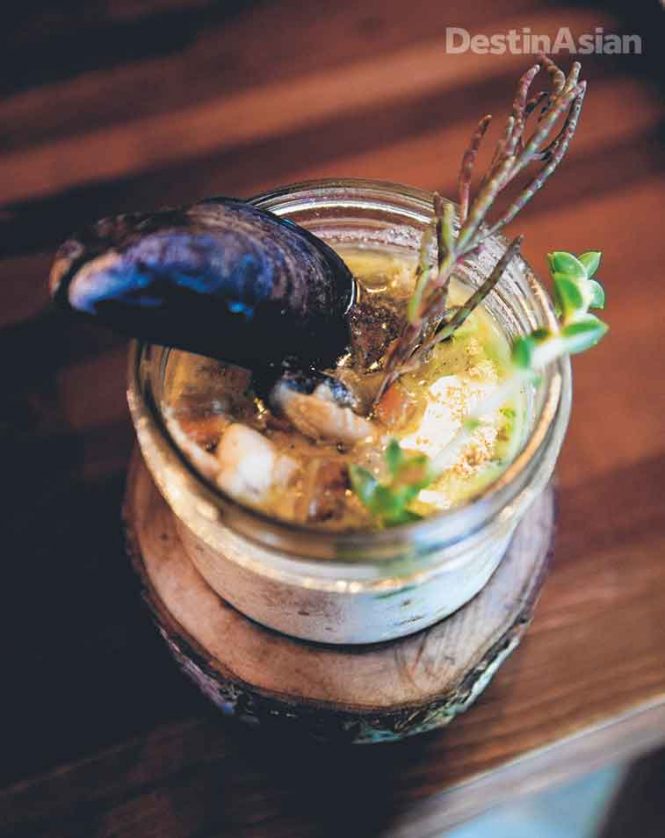
A mason jar of seafood chowder at chef Michael Smith’s FireWorks restaurant
The fields around our place slowly filled with more houses over the years, and the lights of Charlottetown, the island’s compact capital, seem to burn a little brighter these days. But on clear, moonless nights, I’ll still wrap myself in a blanket, go outside to stargaze, and feel like it’s not me but the rest of the world that is hidden far away.
It is a delusion to believe that some places escape change, but on P.E.I. change seems to happen at the pace of a wheelbarrow being pushed through the snow banks of one of its ferocious winters. Perhaps it’s out of stubbornness, which has long been ingrained in the island’s character. P.E.I. may be known as Canada’s birthplace for having hosted the Charlottetown Conference in 1864, the first gathering of representatives from what were then the British colonies of Nova Scotia, New Brunswick, P.E.I., and the Province of Canada (present-day Ontario and Quebec) to discuss the formation of the Canadian Confederation. But when that coalesced three years later, P.E.I. abstained. It wasn’t until 1873, when a failed railroad project left the island deep in debt, that it finally became a part of nascent Canada.
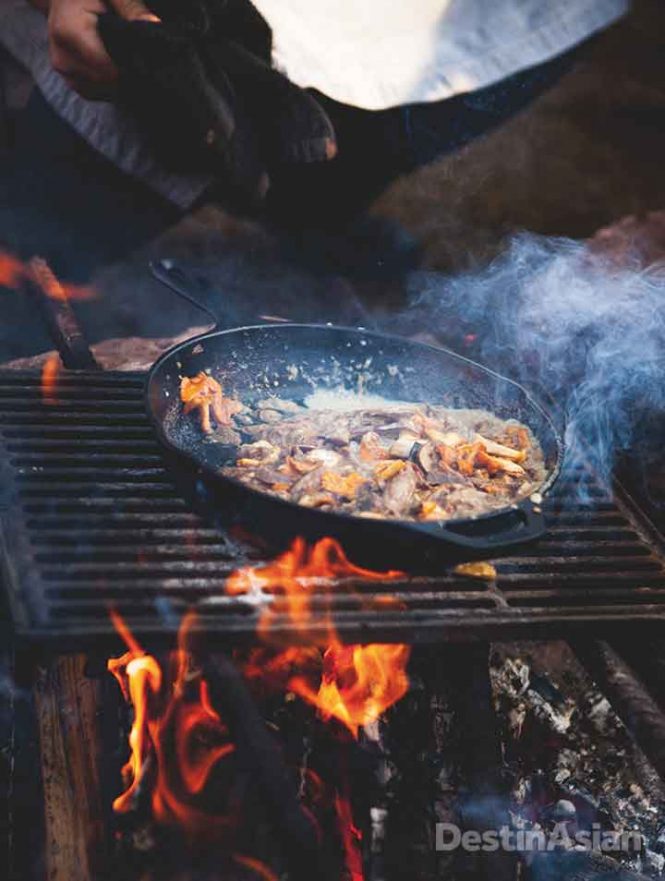
Duck hors d’oeuvres cooked up at FireWorks
The island has also long had steady sources of income that have given it the independence to do as it wishes. The passionate, redheaded heroine of Lucy Maud Montgomery’s much-loved 1908 novel Anne of Green Gables has become the foundation of the summer tourism industry, now rounded out with golf courses, seafood suppers, and national parks that encompass fine pink-sand beaches and the warmest seawater in all of Canada. Agriculture and fisheries are also economic mainstays. Lobsters and potatoes account for a major slice of the export pie, while the global food industry’s hunger for P.E.I.’s rope-grown blue mussels appears insatiable; last year, the island exported more than US$22 million worth of its exceptional mollusks.
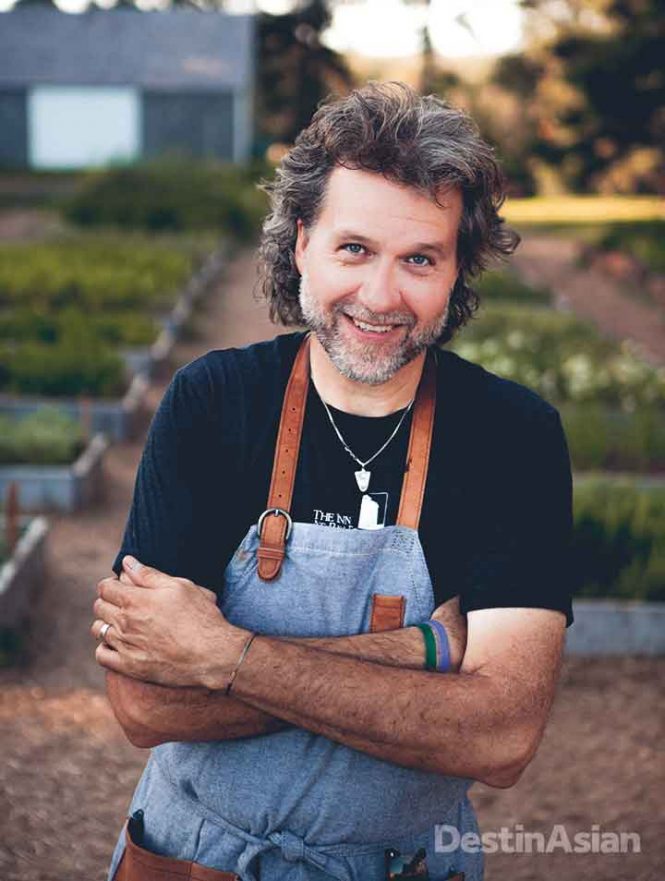
Chef Michael Smith
However, a surge of entrepreneur-driven change has also begun to brush up the island’s style recently, adding some jeans and hoodies to its standard wardrobe of lobster bibs and Carhartts. Rather than leaving home for cities like Halifax or Toronto, more young islanders are deciding to stay or return here and invest in P.E.I. as a place they want to live, aided by government and private initiatives supporting start-ups and budding professionals. This has led to a growing supply and demand for things like origin-focused coffee shops, innovative restaurants, and a craft beer festival. These aren’t exactly boom times, mind you—P.E.I. remains gloriously free of any name-brand beach resorts, clubs, or even a single high-rise. It’s simply an effort by islanders to make their beautiful home a bit cooler, too.

The Inn at Bay Fortune’s birch-pillared lobby
“When I was in university on P.E.I. there were no craft beers,” recalled Michael Hogan, who, together with partner Mitch Cobb, founded Upstreet Craft Brewery on the outskirts of Charlottetown in 2015. “It was only when I moved away to Halifax that I began to know what a microbrew was.” After a few brief stints at breweries in Nova Scotia, a brewing course in Ottawa, and innumerable batches of homebrew, Hogan and Cobb now produce five flagship beers and a few seasonal releases, including a jarringly complex pale ale called Denovo Farmhouse Saison. Their increasingly popular beers are available on tap and in the bottle at dozens of places on the island, but the best place to sample them is at the source. Upstreet’s high-ceilinged, wood-walled bar is the heart of the operation, designed and built almost entirely by family and friends and populated by locals who come to have their growlers filled or spend an afternoon playing board games.
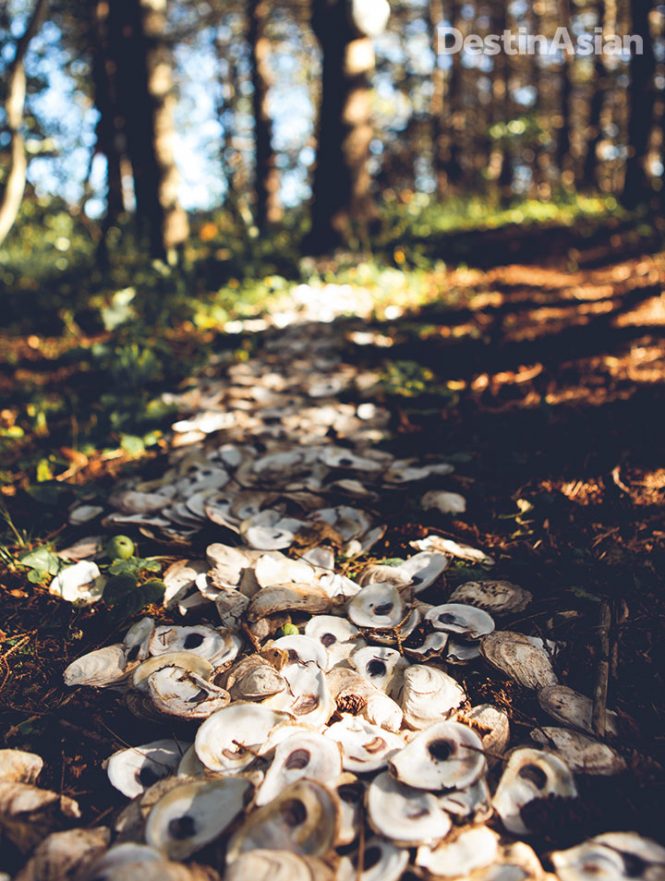
An oyster-shelled path
A 30-minute drive west of Charlottetown in the softly rolling hills of Rose Valley is Barnone, a farm-based microbrewery run by the Campbell family out of their converted cattle barn. While it’s a much smaller enterprise than Upstreet, Barnone grows its own hops (half a dozen varieties, no less) and bagged a handful of awards during its first full year of operation in 2014. It also hosts concerts in the summer. And so, on a cool evening last September, my dad and I made our way out to the Campbells’ barn, driving through pretty countryside as the setting sun turned the sky from orange to a deep rose. There, we grabbed a couple of fantastic IPAs in the woodchip-floored bar area before heading upstairs to the loft, which has been fitted out with theater seats. Keith Mullins, the night’s musician, was enjoying a brew of his own with audience members before taking his stool on the stage. Classically trained, Mullins is a one-man band whose songs about his kids chasing fireflies are too heartfelt to be cliché, and whose musicianship is far too impressive for a humble barn theater. Having studied drumming in Cuba and West Africa, he tapped complex beats with a foot pedal while fingerpicking melodies on his guitar and blowing harmonica chords between verses. With bubbly couples singing along and getting up from their chairs to dance underneath the barn’s high vaulted roof, it felt like a particular P.E.I. breed of church.

Red-clay cliffs at Cavendish on the island’s northern shores
Music is a big part of life on the island. Take an afternoon drive, and you’re likely to spot hand-painted signs staked in yards announcing HOUSE PARTY, 7 P.M. or CEILIDH TONIGHT with an arrow pointing back toward a house or barn or community center. In island-speak, this means locals will gather around sunset, bring their instruments—fiddles, drum boxes, washboards, spoons—and spend the night jamming Acadian folk songs that have been passed down since the first French settlers arrived in 1720.

